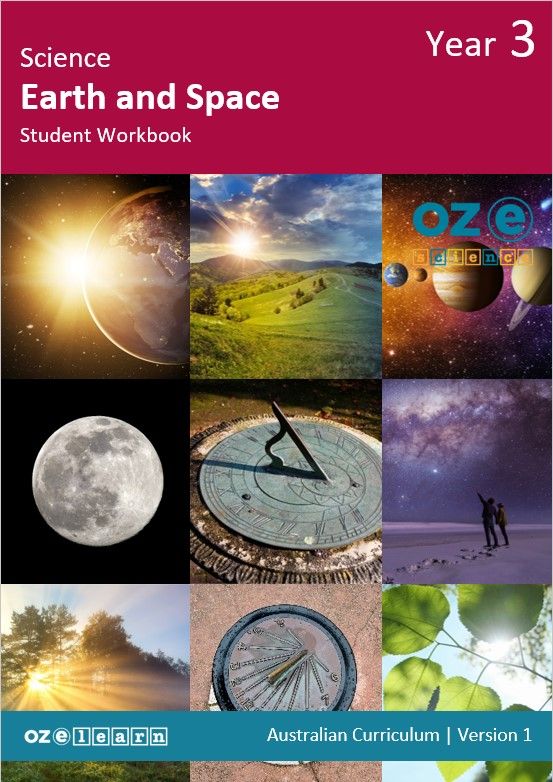Oz-e-science
In Lessons 1 to 9, students learn about:
- describing the Sun and comparing the sizes of different stars
- identifying the power of sunlight on Earth and making a model showing how sunlight energy is used on Earth
- why the Earth has night and day and representing day and night on a globe
- analysing why we have seasons and comparing them in different parts of the world
- the moon and its phases and representing the phases in a mobile
- planning a model of the Sun, Earth, and the Moon
- comparing Indigenous Australian storytelling to the movement of Earth, the Sun and the Moon, and representing the story about how the Earth, Sun and space were made using a storyboard
- building a sundial and predicting how well it will work
- presenting the findings from the sundial investigation to the class.
- Describe the Sun and other stars in the universe.
- Compare the sizes of different stars.
- Identify examples of sunlight on Earth.
- Make a model to show how sunlight energy is used on Earth.
- Explain why the Earth has night and day.
- Represent day and night on a globe
- Analyse why we have seasons.
- Compare seasons in different parts of the world.
- Describe the Moon and its phases.
- Represent the Moon phases in a mobile.
- Identify the orbits of the Earth and the Moon.
- Explain how long each orbit takes.
- Plan the steps in making a model of the Sun, Earth, and the Moon.
- Model the orbits of Earth and the Moon around the Sun.
- Compare Indigenous Australian storytelling to the movement of the Earth, the Sun and the Moon.
- Represent the story with a storyboard.
- Predict where the shadow of the pencil will fall on the sundial.
- Represent the time of day using a sundial.
- Evaluate the findings from the sundial investigation and communicate these findings to the class.
Progress Tests
Progress tests are conducted after every second lesson, allowing teachers to monitor student understanding of the concepts taught over the past two lessons and to identify where reteaching is needed. The Teaching Guide contains the testing questions, and the Student Workbook has a section where students write their answers and score themselves.
Structured Research Activity
The Structured Research Activity (SRA) for this unit is: Students construct a sundial and present the results of their sundial investigation. The SRA takes place over two lessons so students can apply the Science Understanding and Science Inquiry Skills covered in the unit. Teachers use the Guide to Making Judgements, which is included in the Teaching Guide, to mark the SRA.
End-of-Unit Assessment
The last lesson is the end-of-unit assessment, which has a variety of question formats (e.g. label the diagram, circle the correct answer) to assess student mastery of content from the unit. The end-of-unit assessment is in the Teaching Guide. Teachers copy the assessment and distribute to students at testing time.
Progress tests are conducted after every second lesson, allowing teachers to monitor student understanding of the concepts taught over the past two lessons and to identify where reteaching is needed. The Teaching Guide contains the testing questions, and the Student Workbook has a section where students write their answers and score themselves.
Structured Research Activity
The Structured Research Activity (SRA) for this unit is: Students construct a sundial and present the results of their sundial investigation. The SRA takes place over two lessons so students can apply the Science Understanding and Science Inquiry Skills covered in the unit. Teachers use the Guide to Making Judgements, which is included in the Teaching Guide, to mark the SRA.
End-of-Unit Assessment
The last lesson is the end-of-unit assessment, which has a variety of question formats (e.g. label the diagram, circle the correct answer) to assess student mastery of content from the unit. The end-of-unit assessment is in the Teaching Guide. Teachers copy the assessment and distribute to students at testing time.


